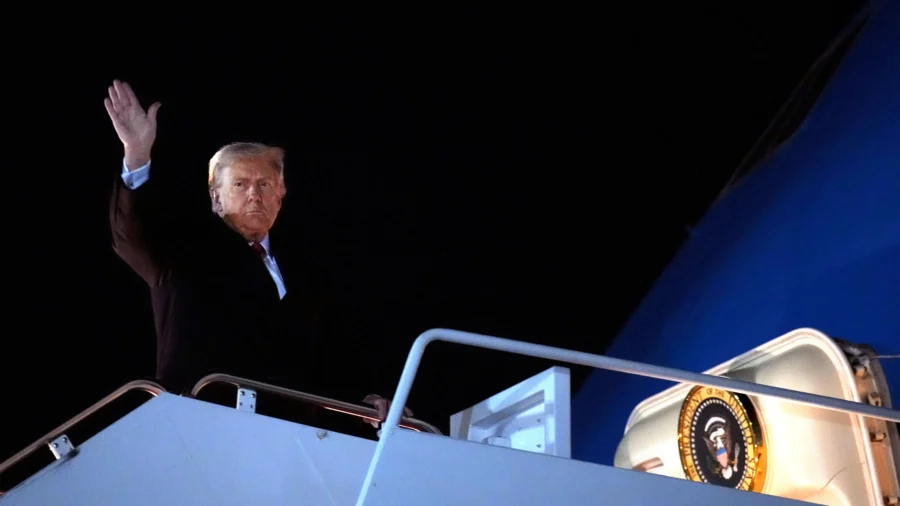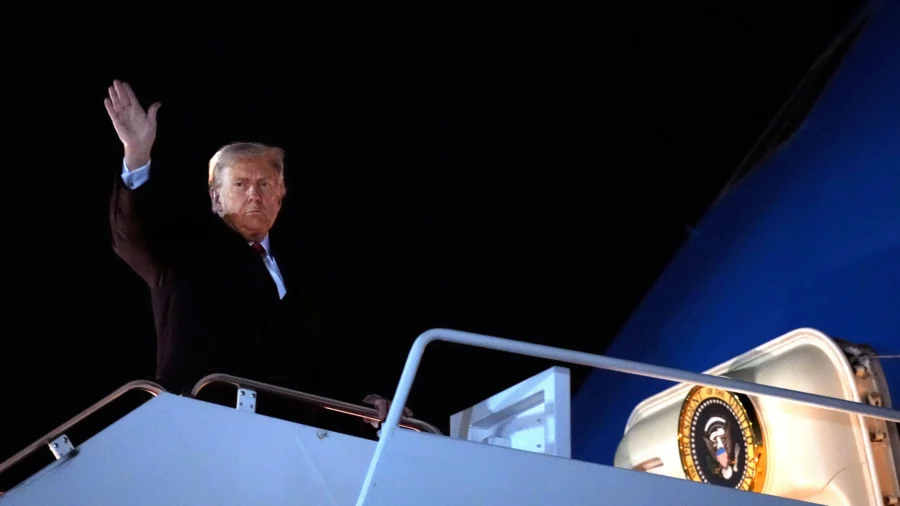
U.S. President Donald Trump is heading to Malaysia on the first stop of his week-long Asia tour, where he will meet with heads of state and address global leaders and about 1,700 business executives.
The trip is expected to yield new investments in the United States, possible trade deals, and a potential critical minerals agreement, according to senior White House officials.
U.S. Trade Representative Jamieson Greer and Treasury Secretary Scott Bessent have already left for Malaysia to begin the fifth round of U.S.–China trade talks with their Chinese counterparts.
Trump is scheduled to meet with Chinese Communist Party (CCP) leader Xi Jinping on the last day of his trip, in Busan, South Korea, on Oct. 30.
Trump has previewed major items on the United States’ list of demands for China, and if a fair deal isn’t forthcoming in what he said would be a “long meeting,” then additional 100 percent tariffs for Chinese imports go into effect on Nov. 1.
Schedule
Trump will arrive in Malaysia on Oct. 26 and meet with Malaysian Prime Minister Anwar Ibrahim in the afternoon, and is expected to sign a deal.
After, Trump will join the signing of a peace deal between Cambodian Prime Minister Hun Manet and Thai Prime Minister Anutin Charnvirakul.
A conflict broke out between Cambodia and Thailand over border disputes in July, resulting in dozens dead and 300,000 displaced during five days of fighting. Trump called the heads of state of the two countries on July 26. They subsequently negotiated a cease-fire deal in Malaysia on July 28.
Trump will also join a working dinner with ASEAN leaders on Oct. 26, departing the next day for Japan.
On Oct. 28, Trump will meet with the newly elected Japanese Prime Minister Sanae Takaichi.
On Oct. 29, he will fly to South Korea and meet with President Lee Jae Myung. Officials on both sides have said they are eager to finalize a trade deal that would lower tariffs to 15 percent in exchange for billions in investment in the United States in critical sectors such as shipbuilding. After, Trump will deliver keynote remarks to an APEC CEO luncheon and join an APEC Leaders working dinner.
On Oct. 30, Trump will meet with Xi in Korea before heading back to Washington.
China Negotiations
U.S. trade negotiators have said that U.S.–China talks have been ongoing since Beijing imposed massive rare-earth restrictions earlier this month. The move had prompted the United States to retaliate with 100 percent tariffs.
Given the scope of the restrictions—with U.S. officials saying they would affect global trade broadly, even when China is not a party to the deal—international bodies such as the European Union and the International Monetary Fund have joined the United States in calling on China to reverse the measure immediately.
China’s monopoly over critical minerals production has long been a strategic concern for the United States, as China accounts for at least 90 percent of processing.
Trump this week told reporters that rare earths aren’t the leverage China believes they are, especially since using that leverage would come at the expense of doing any business with the United States.
“At a certain point, they will not be able to do any business with us. At a certain point, if they pay enough tariffs, it’s almost like saying, ‘We don’t want to do business with you,’” Trump told reporters after meeting with Australian Prime Minister Anthony Albanese and announcing a critical minerals deal on Oct. 20.
In addition to a reversal of the rare-earth restrictions, Trump said this week that he expects Beijing to crack down on fentanyl precursor exports, resume purchases of U.S. soybeans, and offer fair trading terms to reverse the trend of more U.S. investments in China than the other way around.


